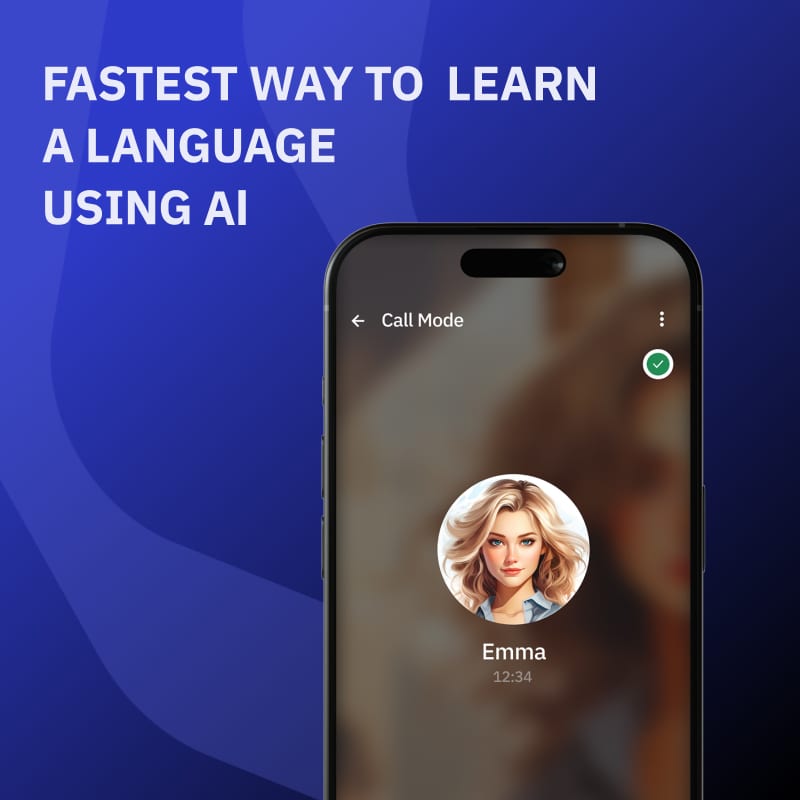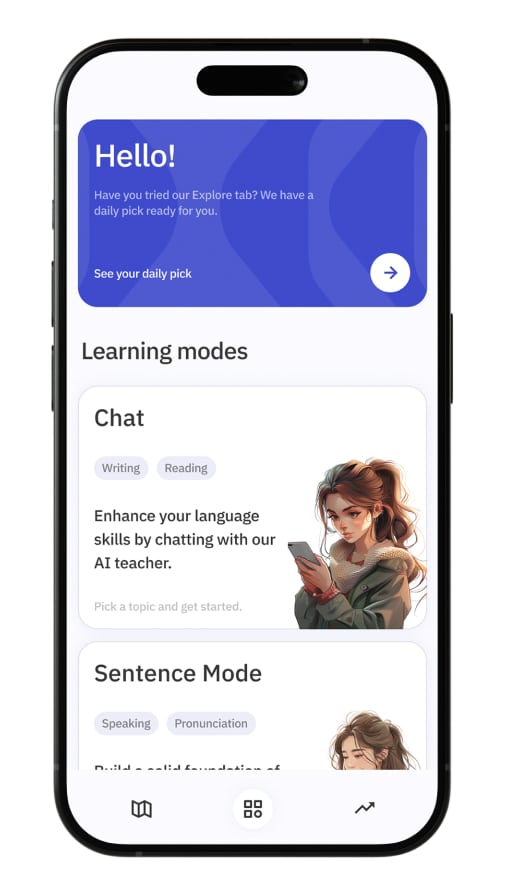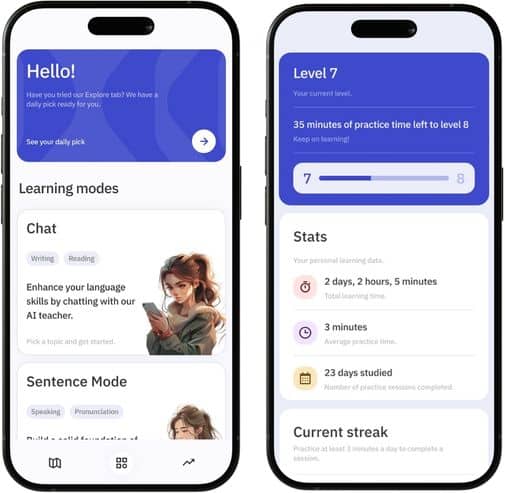Revolutionizing Language Acquisition through AI Technology
The field of language learning has been significantly transformed with the advent of artificial intelligence (AI). This technology has not only made learning more accessible but also more engaging and efficient. The latest innovations in AI for language learning leverage sophisticated algorithms and data-driven approaches to provide personalized learning experiences, real-time feedback, and immersive environments that mimic real-life interactions.
Personalized Learning Experience
Adaptive Learning Systems: AI-powered platforms now use adaptive learning technologies which tailor lessons according to an individual’s learning pace and style. This personalized approach helps in identifying the strengths and weaknesses of a learner, thereby providing customized lessons and exercises. Tools such as Duolingo and Babbel incorporate smart algorithms that adjust the difficulty level and the content based on the learner’s performance.
Customizable Learning Paths: AI facilitates the creation of customizable learning paths where learners can set specific goals and milestones. These platforms adapt to various learning objectives, whether the learner aims to achieve fluency for a trip abroad or needs to master vocabulary for a business presentation.
Enhanced Interaction and Engagement
Chatbots and Conversational Agents: AI-driven chatbots and conversational agents such as Andy English Bot and ChatGPT provide learners with the opportunity to practice languages in a conversational setting. These bots use natural language processing (NLP) to interpret the input from the learners and generate natural, contextually appropriate responses, thereby simulating a real conversation.
Gamification Techniques: Language learning apps are increasingly incorporating gamification to increase learner engagement. By integrating elements such as points, levels, and leaderboards, these platforms make learning a new language fun and engaging. For example, Memrise uses gamification to help learners practice vocabulary through memory games and quizzes.
Real-Time Feedback and Correction
Immediate Error Correction: One of the significant advantages of AI in language learning is its ability to provide immediate feedback. AI algorithms can quickly identify errors in pronunciation, grammar, and vocabulary, providing corrections in real-time. This instant feedback mechanism helps learners to improve their language skills more rapidly.
Speech Recognition Technologies: Advanced speech recognition technologies are used in language learning to help improve pronunciation. Apps like Rosetta Stone and Pimsleur use AI to analyze the learner’s speech patterns and offer feedback on accent, intonation, and rhythm.
Creation of Immersive Learning Environments
Virtual Reality (VR) and Augmented Reality (AR): AI is being combined with VR and AR to create immersive language learning experiences. Platforms like MondlyVR place learners in virtual scenarios where they can interact with virtual characters in the target language. This not only enhances vocabulary retention but also improves listening and speaking skills in a more engaging way.
Interactive Videos and Scenarios: AI technologies enable the creation of interactive videos where learners can engage directly with the content. For instance, the use of AI in platforms like FluentU allows learners to watch videos in the target language with interactive subtitles and quizzes.
Big Data and Learning Analytics
Data-Driven Insights: The use of big data in AI language learning platforms allows for the analysis of vast amounts of information regarding learner behaviors and preferences. These insights help in refining the learning algorithms to better suit individual needs and enhance the overall learning experience.
Progress Tracking and Analytics: AI systems compile data on the learner’s progress, which is used to provide detailed analytics. These insights help learners understand their progress over time and identify areas that require more focus.
Challenges and Ethical Considerations
Data Privacy and Security: With the increasing use of AI and data analytics in language learning, concerns regarding data privacy and security are prominent. It is crucial for developers to implement robust security measures to protect learner data and ensure compliance with global data protection regulations.
Access and Equity: While AI has the potential to make language learning more accessible, there remains a digital divide that can limit access for some learners. Ensuring equitable access to these technologies is essential for maximizing their benefits across different demographics.
Future Prospects in AI-Driven Language Learning
Advancements in NLP and Machine Learning: Future innovations in NLP and machine learning will likely focus on improving the understanding of more complex linguistic nuances and cultural contexts. This will enhance the ability of AI systems to provide even more personalized and context-aware learning experiences.
Integration with Other Educational Resources: Moving forward, we can expect to see more integration of AI language learning tools with other educational resources, creating holistic learning environments that support diverse learning needs and styles.
In conclusion, the latest innovations in AI for language learning are making it easier, faster, and more enjoyable to learn new languages. These technologies not only provide personalized learning experiences but also offer real-time feedback, immersive environments, and insights driven by big data. As AI continues to evolve, we can anticipate even more sophisticated and effective language learning solutions in the years to come.













